We had planned to go to Gorse Hill Apple Festival but we found that there were engineering works on the Ormskirk line, and since there was to be a big football match later in the day, the rail-replacement buses coming home would be full. We made a spur-of-the-moment decision to go to Port Sunlight instead.
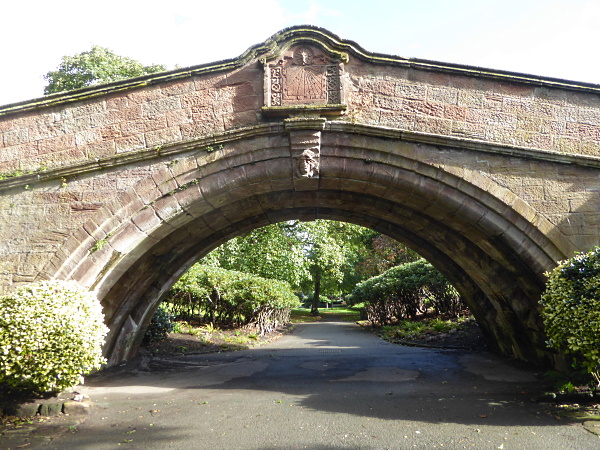
Port Sunlight is a model village on the Wirral, built by the Lever brothers for the workers in the Sunlight soap factory. Building started in 1888. The houses are all in Arts and Crafts style, and the whole village is a conservation area and potential World Heritage site. Even the railway station and the Tudor Rose tea rooms reflect the prevailing style.
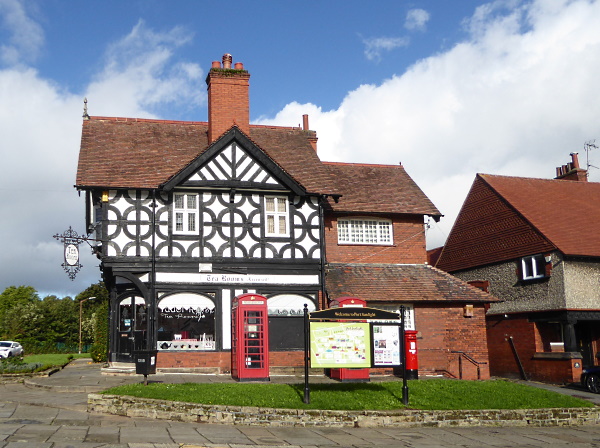
We headed straight down to the Dell, which separates the factory from the housing. We are familiar with many of the specimen trees there – Brewer’s Spruce, Honey Locust, Dawn Redwoods, and two huge Tulip trees, although we were a bit early for their famous autumn colour. We suspect one young tree is a Dove or Handkerchief tree, but it is some years off producing its distinctive flowers.
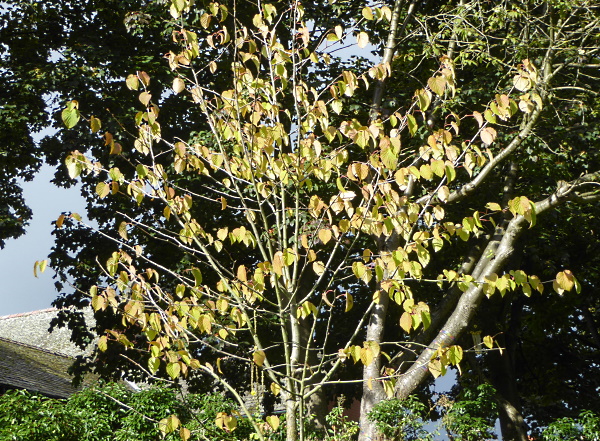
A wooden bench was full of multi-coloured Ladybirds and some of their larvae. Going by their size and the variety of colours, they were almost certainly all the invasive Harlequins. The distinctive feature is that Harlequins have brown legs, whereas our natives have black legs. This is hard to see in life, in dappled shade, but I can see brown legs on my photos. I am not quite sure about the red one, which may be a native 7-spot.
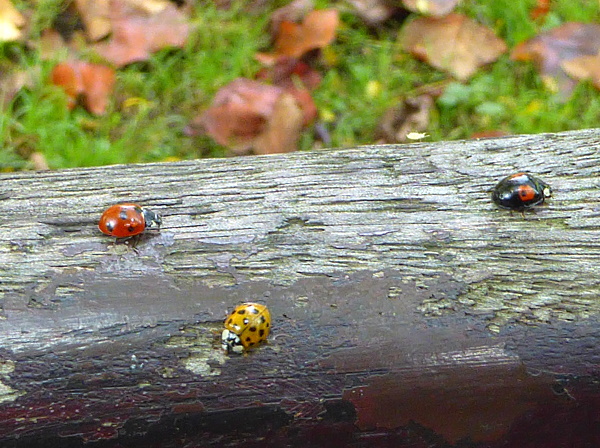
On the bank around the eastern end of the Dell we noticed the Rowan trees for the first time. They appear to be a planned group of several different varieties, with cream, orange or red berries.
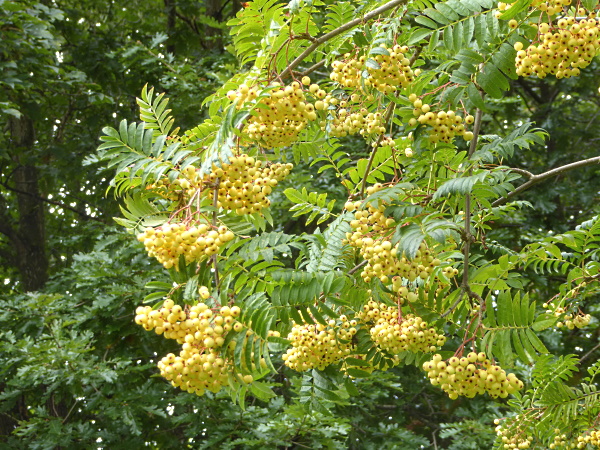
The rain was holding off, and the sun even came out. In the graveyard of Christ Church United Reformed Church (where the Lever family worshipped) there is the grave stone of Mabel Beatrice Cooper who died in 1969 aged 81, noted as “One of the first, and a life-long employee of Lever Brothers”. The stone also commemorates her son John, a Flight Sergeant in the RAF, who was killed in action in 1942, aged only 22, and buried in Germany. He was probably piloting a bomber that was shot down. We had really come to the church to see a notable tree just inside the railings. A sign says it was planted by the Women’s Institute, but doesn’t say what it is. It has huge leaves and is probably a Foxglove tree, although we couldn’t see any gone-over flower spikes. They are easily confused with Indian Bean trees, especially when young, but there weren’t any beans either. We took a leaf over to the garden centre, where there is a definite Indian Bean and laid one leaf of each side by side. The one on the right is definitely an Indian Bean leaf, about 1.75 pens wide (9 inches, 23 cm) and I’m pretty sure the one from the church (on the left) is a Foxglove leaf. The clincher is the short but sudden fine point on the Indian Bean leaf (short accuminate).
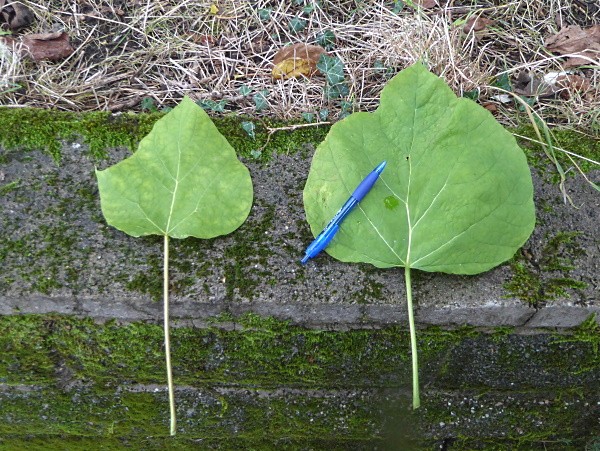
The garden centre is a convenient pit stop, and it has a wonderful old Olive tree in a pot in the restaurant courtyard.
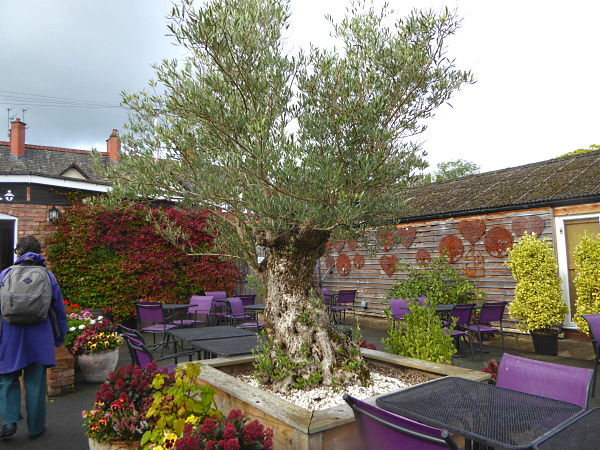
We lunched in the Hillsborough memorial garden overlooking the War Memorial and the Lady Lever Art Gallery. A young Blackbird was digging a hole on the edge of shrubbery. Was it excavating an ant nest?
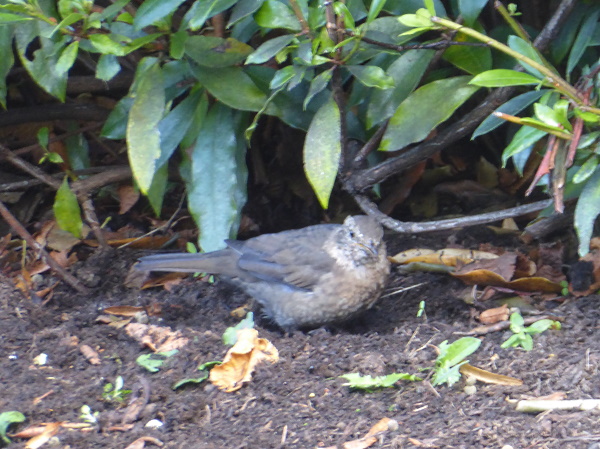
Then we walked along the rose garden. Many were still in bloom and most were scented and lovely.
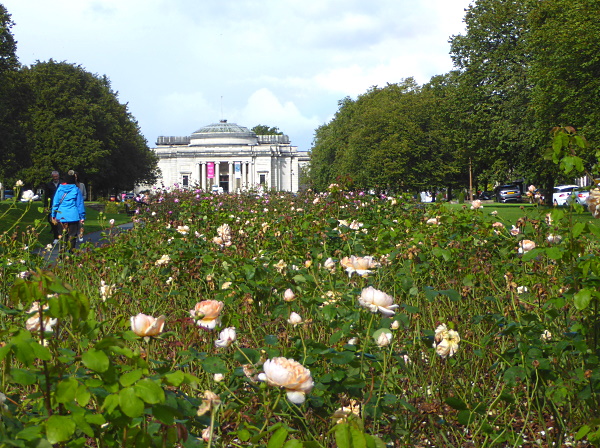
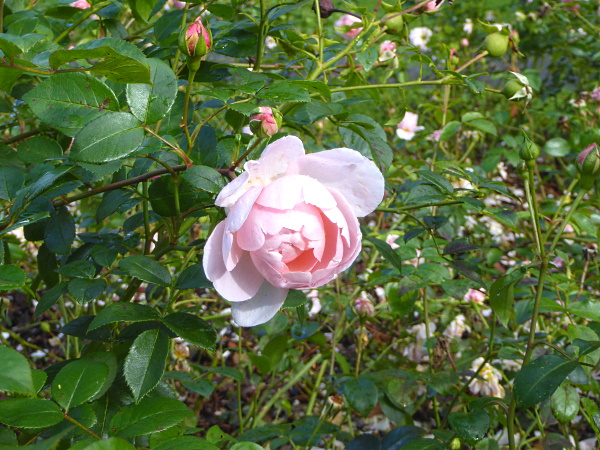
There was no sign that the New Ferry butterfly park was open, so we headed back to town.
Public transport details: Train from Central towards Chester at 10.15m arriving Port Sunlight 10.31. Returned on train from Bebington at 1.58, arriving Liverpool 2.15.
